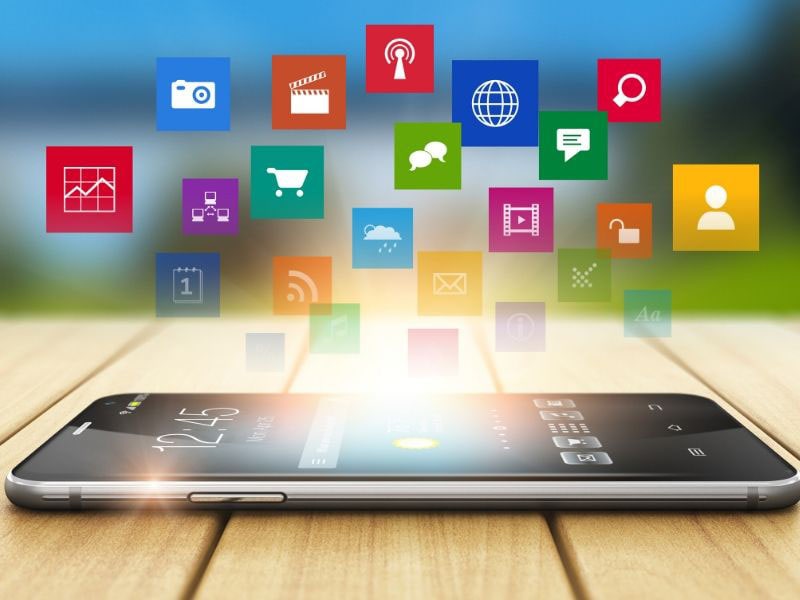
Over the past decades, digital technology has been the most brilliant protagonist of the various modern technological advances that we have witnessed. We went from analog to digital technology in the blink of an eye, and our world was never the same.
Until a couple of decades ago, almost all of the appliances, gadgets and devices that a typical family bought year after year were purely analog or analogue.
By this we don’t just mean digital cell phones, we also mean common things like our electric stoves, LED screen refrigerators, smart coffee makers and even our cars, which today are 100% digital in almost all cases at the level of car driving and command technology.
What is digital technology?
In order to define digital technology we first have to remind ourselves what “technology” is, and then what is known as “digital”.
The definition of technology has taught us that it is responsible for developing a conjunction between technique, tools and science, to produce technological products that serve to improve our life on earth.
The technology added to the “digital” allows us to leave the mechanical and analogous technologies to pass to the world expressed in numbers 0 and 1 (zero and one), that is measurable, alterable in an easy way and through science particularly thanks to the mathematical calculation.
Now that we are clear about the concept of digital technology, let’s see a little more about the differences with analog technology, its influence in today’s world and examples of which digital products we can find it in.
What are digital technologies for?
They serve to accelerate processes, calculations, generate new ways and methods of manipulating information, as well as the objective of the technology itself, it serves to improve our productivity, and in the end, our quality of life.
Differences between analog vs. digital technology
As we all know, there are two types of communication technologies in any type of electronic device: analog and digital, let’s see their main differences now.
Analogical technology
- It occurs when the signal sent by the device is continuous, it goes from one value at a time until it goes through them all.
- Analog data are very difficult to calculate, handle and store in general.
Digital technology
- It is the one that allows jumps between the intermediate points, that is, it is a discontinuous signal and uses two values called “0” and “1”. The use of this technology allows the generation of high or low voltage electrical impulses.
- It allows digital data and information to be manipulated accurately, precisely, with a minimum margin of error, and continuously.
Impacts in the modern world
Technological advances in digital technology make everything better, faster and more productive.
Thinking back to the analog TVs of decades ago is a mere example, but we can go further if we remember the era of the music cassette, which was a totally mechanical / analog device, and which was played on the famous Walkman, so popular in the 80s and 90s all over the world.
Today both have been forgotten thanks to the digital TVs and digital music players that we all have in each of our mobiles. Nowadays it is possible to store thousands of songs in one of our phones, when before we used hundreds of cassettes or even CDs for the same purpose.
Analog games are also a thing of the past, nowadays no child plays with their dolls or outside in their backyards for long, because they find it more fun to be locked up with the digital video game console that immerses them in a world of interaction and bombardment of information instantly.

Examples of digital technology
There are many other examples we use of digital technology in our daily lives, let’s see what they are.
Digital TV and cable
The transition from analog to digital TV and cable TV has been happening for more than 10 years in first world countries, while in Latin American countries it is still booming, where analog TV is still alive.
Digital photography
Like a modern digital TV, having a digital camera at that time was a privileged luxury for only a few people. But as time went by, two things happened: significant improvements in design and functionality began to be made, while prices dropped dramatically.
Digital communication
Thanks to the massiveness of the Internet, it is now possible to communicate electronically with distant relatives, friends or colleagues living on the other side of the world. Thanks to computers and in particular the Internet, we can play online, chat with remote people, send photos, files, documents, videos, music and much more, all in a couple of seconds.
Digital Phones
The phones have also undergone major changes. Thirty years ago, it was common to see an analog phone from which we manually dialed by turning a wheel for each number, then phones with digital displays and wireless phones appeared.
Shopping
People gradually no longer need to leave their homes to make purchases, since the whole process is done via the Internet and not even with a computer, now you do it directly from your mobile. Today everything has been simplified so much that you can order everything from your mobile phone, choose the products digitally, pay online and then receive the products at your door.
Medicine
Medical technology has been one of the most beneficial sectors when it comes to digital technology. Over the years, it has been perfected so much that analog equipment is gradually being phased out. In modern hospitals, sanatoriums and clinics today everything is digital, X-ray equipment is operated from touch panels, as are MRI and CT machines, everything is digitised thanks to computers.
Digital Money
Would you have imagined 20 years ago that digital money would exist today? That with your mobile phone in hand you could pay for almost anything, and that you wouldn’t need to use money, or that you would use credit cards less and less?
First there was Paypal, which was one of the first electronic purses, which has been widely adopted by almost everyone who has an online account in any Internet service, which serves not only to buy but also to pay for services or goods.
As we’ve seen, digital technology is here to stay, and it will continue to evolve constantly. Thanks to the scientific advances and new digital technologies that continue to emerge every day, you can be completely immersed in the numerical experience of 0 and 1, even if you don’t know it.
The advances in artificial intelligence, augmented reality, added to virtual reality and the constant development of programming languages give us hope for great discoveries that will be revealed in the coming years and decades.

